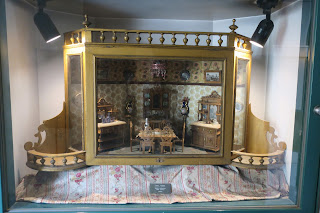Hotel Monterey Nagasaki, located close to the sea, emulates the atmosphere and
decor reminiscent of the time when the sea-faring voyagers arrived from
Portugal, in an ongoing connection with Nagasaki that dates back to 1543.
This hotel promises to deliver a cozy experience where guests can feel part of
the story and history of Nagasaki, imagining they are part of a scene from
many years ago where the alleyways were illuminated by the rays of the sun and
chance encounters with foreign traders were commonplace./p>
The walls are adorned with blue tiles, expertly painted by Portuguese
craftsmen, providing a colorful atmosphere.
|
In the heart of Nagasaki.
Hotel Monterey Nagasaki is in the heart of Nagasaki, within a 5-minute
walk of Tokiwa Pier and Nagasaki Seaside Park. This hotel is 0.2 mi (0.3
km) from HSBC Nagasaki Branch Museum and 0.3 mi (0.4 km) from Confucius
Shrine.
|
|
Hotel Monterey Nagasaki entrance.
|
|
Tiles with caravel and carrack.
The corridor is decorated with tiles representing two Portuguese ships,
a caravel (left) and a carrack (right).
-
By the Late Middle Ages, the cog and cog-like square-rigged vessels
equipped with a rudder at the stern, were widely used along the coasts
of Europe, from the Mediterranean, to the Baltic.
-
Given the conditions of the Mediterranean, galley type vessels were
extensively used there, as were various two masted vessels, including
the caravels with their lateen sails. These and similar ship types
were familiar to Portuguese navigators and shipwrights.
-
As the Portuguese gradually extended their trade ever further south
along Africa's Atlantic coast during the 15th century, they needed
larger, more durable and more advanced sailing ships for their long
oceanic ventures. Gradually, they developed their own models of
oceanic carracks from a fusion and modification of aspects of the ship
types they knew operating in both the Atlantic and Mediterranean,
generalizing their use in the end of the century for inter-oceanic
travel with a more advanced form of sail rigging that allowed much
improved sailing characteristics in the heavy winds and waves of the
Atlantic Ocean and a hull shape and size that permitted larger
cargoes.
-
See more at
Carrack - Wikipedia.
|
|
Signpost.
At the end of the corridor, the reception is on the left and the dining
room is on the right.
|
|
Front desk.
The front desk is on the first floor of the hotel.
- The staff is available 24 hours a day.
|
|
Flag of Portuguese Nagasaki.
At the front desk is the flag of Portuguese Nagasaki.
-
Unlike many Asian cities built on a grid inspired by the Chinese
model, Nagasaki was built around a centre where the most important
buildings were located, namely the church, the charity (the
Misericórdia) and the town hall, though it did not have any
fortifications.
-
Between 1603 and 1613 Nagasaki would also have a painting school,
guided by the Italian Giovanni Nicolo.
-
Nagasaki had a "Civil Code" and "Criminal Code", distinct from
Japanese law - which was adapted to Roman law; corporal punishments
were lessened. The city was described as having "an unusual number of
children" as its Christian inhabitants avoided infanticide, otherwise
common in Japanese society.
-
The houses were painted white, as in Portuguese fashion. The city had
5000 inhabitants by 1590, and 15,000 in 1600.
-
See more at
Portuguese Nagasaki - Wikipedia.
|
|
Chapel Bussola.
The chapel exudes a classical feel while the painted compass (La
Bussola) on the ceiling is representative of Nagasaki's Portuguese
sailing history. The elegant spiral staircase, bathed in the warm light
from the stained glass windows, make for a spectacular and beautiful
wedding entrance.
-
Hear one's wedding vows reverberate around the chapel's high ceilings
and feel the happiness and bliss of the occasion.
|
|
Amalia salon.
A banquet room perfect for a small business meeting / luncheon, with
décor and furnishings symbolic of a Portuguese palace. If you are
looking to hold a small party with a slightly different ambience, this
room is the perfect setting.
-
Amália da Piedade Rebordão Rodrigues (23 July 1920 – 6 October 1999),
better known as Amália Rodrigues or popularly as Amália, was a
Portuguese fadista (fado singer)
-
Known as the 'Rainha do Fado' ("Queen of Fado"), Rodrigues was
instrumental in popularising fado worldwide and travelled
internationally throughout her career. Amália remains the best-selling
Portuguese artist in history.
-
See more at
Amália Rodrigues - Wikipedia.
|
|
Old dollhouse.
The history of today's dollhouses can be traced back about four hundred
years to the baby house display cases of Europe, which showed idealized
interiors. Smaller dollhouses with more realistic exteriors appeared in
Europe in the 18th century. Early dollhouses were all hand made.
-
The earliest known European dollhouses were the baby houses from the
16th century, which consisted of cabinet display cases made up of
individual rooms. The term “baby” in baby house is coined from the old
English word meaning doll.
-
Dollhouses of this period showed idealized interiors complete with
detailed furnishings and accessories.
-
The cabinets were built by hand with architectural details, filled
with miniature household items and were solely intended for adults.
-
See more at
Dollhouse - Wikipedia.
|
|
Guest room.
The rooms combine a refined elegance with modern practical amenities for
a relaxing and comfortable stay.
-
Rooms are all Non-smoking and equipped Free Wi-Fi, bath amenities and
pajamas.
|
See also
Source
Location













